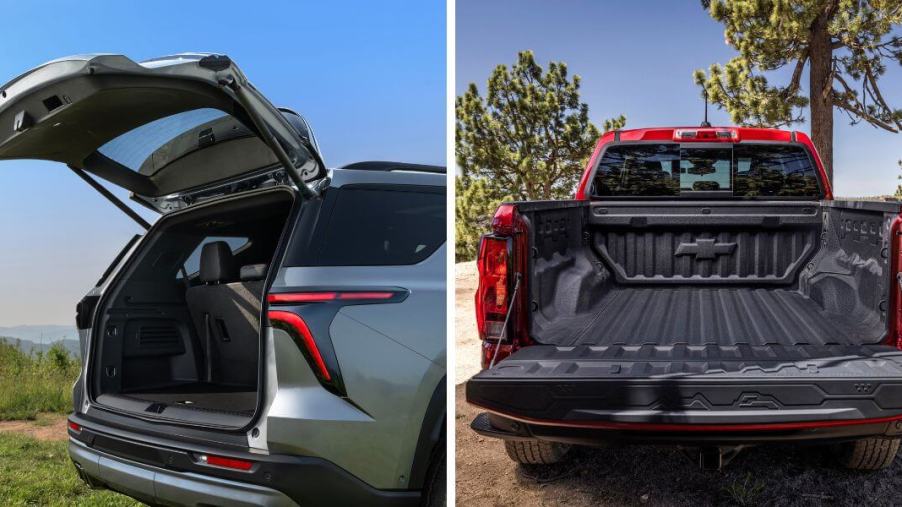
What’s the Difference Between a Liftgate and Tailgate?
The terms “liftgate” and “tailgate” are often used when discussing various types of vehicles, and they refer to different components or features and sometimes even accessories. Let’s dive deeper into the distinctions between these terms, focusing on vehicle cargo room.
What is a liftgate?
A liftgate is a feature primarily associated with vehicles with a rear hatch or cargo area, such as SUVs, hatchbacks, and vans. According to OJ Digital Solutions, it’s essentially a movable door or panel at the rear of the vehicle that allows access to the cargo space. Here are some key points about liftgates:
- Standard Liftgate: Most SUVs and hatchbacks come with a standard liftgate. It is a hinged door that you manually lift or swing open to access the cargo area. It can be opened and closed by hand.
- Power Liftgate: Many modern SUVs and some minivans are equipped with power liftgates. These liftgates are motorized, allowing you to open or close them with the push of a button. Some may even have a hands-free feature where you can open or close the liftgate by waving your foot under the rear bumper.
- Variations: While the primary function of a liftgate is to provide access to the cargo area, there can be variations in design and features among different vehicle models and manufacturers. Some liftgates may have integrated rear wipers, defrosters, or other convenience features.
What is a tailgate?
According to KBB, a tailgate is a different part found on pickup trucks and some SUVs. It is a hinged panel at the rear of the vehicle’s cargo bed. Here’s what you need to know about tailgates:
- Pickup Truck Bed: Pickup trucks have a cargo bed at the rear, and the tailgate serves as a closure for this bed. It can be lowered or opened to access the bed for loading and unloading cargo.
- Variations: Tailgates on pickup trucks can come in various designs and configurations. Some are simple and hinged, while others, like the GMC MultiPro Tailgate and the Ford ProAcess Tailgate, have multiple folding sections or additional features. These advanced tailgates offer increased versatility and functionality.
Other types of liftgates and tailgates
In addition to the vehicle components described above, it’s worth noting that the terms “liftgate” and “tailgate” can have other meanings or uses:
- Commercial Liftgate: In the context of commercial or loading trucks, a liftgate refers to a hydraulic platform installed at the rear of a truck or trailer. It is used to lift heavy cargo, such as pallets, from ground level to the truck’s bed, making loading and unloading more accessible and efficient.
- Tailgate Party: Outside of vehicle terminology, a tailgate party refers to a social gathering held in the parking lot of a stadium or event venue, usually before a sports game or concert, according to Ecoflow. Participants often gather around the rear “tailgate” of a vehicle, where food, drinks, and entertainment are set up.
In summary, the main difference between a liftgate and a tailgate lies in their function and the types of vehicles they are associated with. Liftgates are commonly found on SUVs, hatchbacks, and some vans and are used to access the cargo area, while tailgates are typically found on pickup trucks and serve as closures for the cargo bed.





